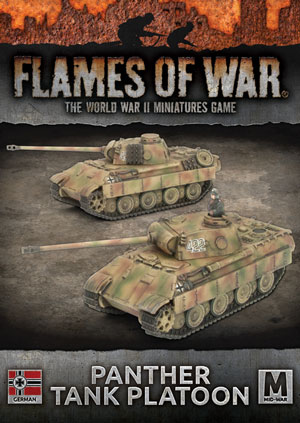
Flames Of War: Ghost Panzers Releases
Panther Tank Platoon (GBX126)

Operation Citadel was delayed to allow time for the Panther tank to make its way to the front Though a high priority was put on the new tank production was delayed due to a lack of specialized machine tools needed for the hull. The first tanks came off the production line in December 1942. The long 7.5cm gun and 100mm of frontal armour on the Panther easily outperformed Allied or Soviet tanks on the field, giving the German crews a sense of invulnerability. The Panther was the most formidable of the German medium tanks and packed one hell of a punch. It was armed with the 7.5cm Rheinmetall KwK42 (L/70). It carried 79 rounds in the tank. While the KwK42 didn’t quite have the same reputation as the 88 it was, nonetheless, one of the most powerful tank guns of the war. It had a large propellant charge and the long barrel gave it a very high muzzle velocity and excellent armour-penetration.
HS 129 Battle Flight (GBX135)
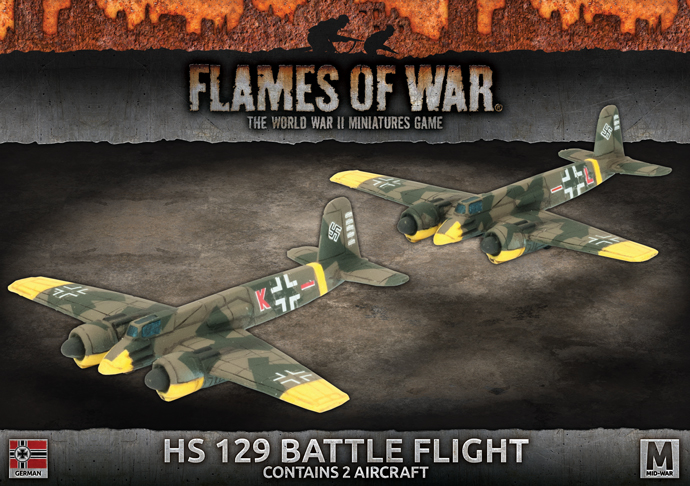
The Hs 129 went into action in early 1942 as the first dedicated ground-attack aircraft. The pilot was protected by an armoured ‘bathtub’ to keep them safe during their low-level attack runs. This rugged aircraft served all across the Eastern Front, as well as in Tunisia.
Armoured Flame-thrower Platoon (GBX125)
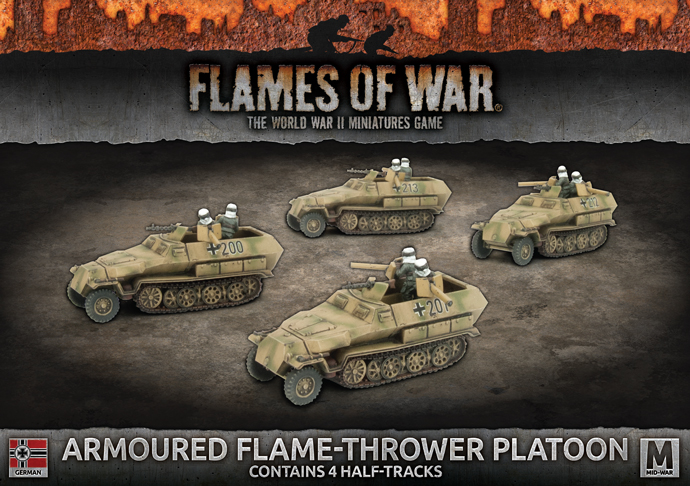
Armoured Flame-Thrower Platoons mount a fearsome flamethrowers on the armoured Sd Kfz 251 halftrack, combining speed and armour with fearsome jets of fire. Multiple flamethrowers could be be mounted on a single halftrack, belching fire in multiple directions to flush out entrenched enemies. Fast and more protected than a flamethrower on foot, the Armoured Flame-Thrower Platoons are a terrifying sight to behold.
Hummel Artillery Battery (GBX132)
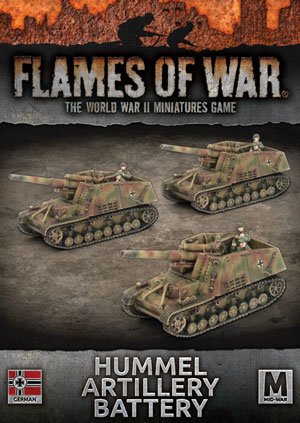
In 1942 the Waffenamt (Ordnance Department) saw a need for self-propelled artillery for the Panzer Divisions. Initially a design for a 10.5cm howitzer mounted on a Panzer III/IV chassis was considered, but with the advent of the Wespe 10.5cm self-propelled howitzer on the Panzer II hull the design was changed to mount the 15cm howitzer. The new gun was based on a lengthened Panzer IV hull with some mechanical elements from the Panzer III. The prototype was named the Hummel (Bumble-Bee). It was armed with the 15cm sFH 18/1 L/30 howitzer mounted in an open topped fighting compartment. The Hummel proved popular with crews and they generally lived with their Hummel. It was common to find personal stowage in and around the vehicle. It went into production in late 1942 and by early 1943 the first batteries were in service with several Panzer divisions. Initially each Panzer division was to receive one battery of 6, but later some divisions received a second battery. Their first major action was a Kursk where their heavy firepower proved valuable during the preparatory bombardment of the Soviet positions before attacks. It continued to prove useful providing mobile artillery support for advancing Panzer divisions until the end of the war.
Sd Kfz 7/1 Quad AA Platoon (GBX134)
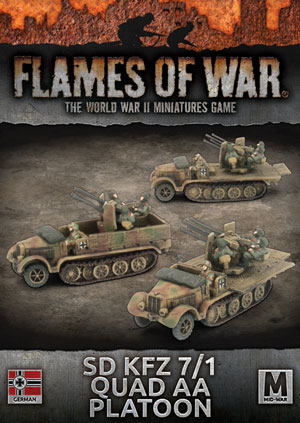
The Sd Kfz 7/1 half-track was armed with a quad-firing 20mm anti-aircraft gun, giving each vehicle a tremendous rate of fire of 1800 rounds per minute. With that much fire in the sky, Soviet aircraft had a very difficult time attacking panzer spearheads.
Click here to go to the Flames Of War Website for the full spotlights and more information…
